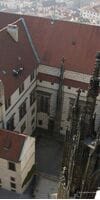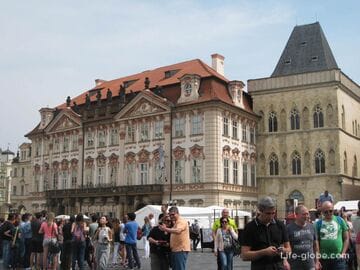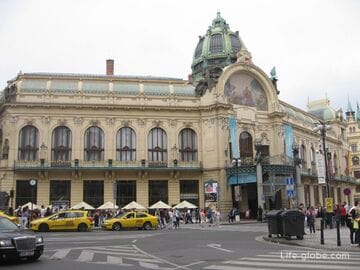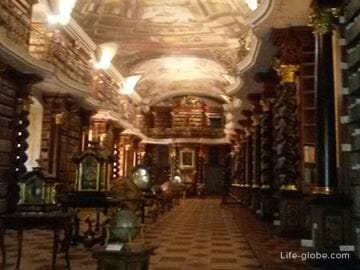The Old Royal Palace (Czech name: Starý královský palác) is a historical palace in Prague, which served as the residence of Czech princes and kings from the 10th to the 16th centuries.
The old Royal Palace is a complex of buildings that were built over time and under different kings.
In the palace there are: the Church of All Saints, Vladislav Hall, the Old Chambers, Ludwik's Wing; and on the Gothic floor there is an exhibition "The History of Prague Castle". The premises of the palace can be visited - more details at the end of this article.
The Old Royal Palace is located in the historical part of Prague, on the territory of Prague Castle (Pražský hrad) and is one of its oldest parts.

The original princely residence, the exact location of which is not documented, mostly wooden, was built in Prague Castle at the turn of the 9th-10th centuries.
In the 12th century, Prince Sobeslav built a full-fledged Romanesque stone princely palace next to the fortress wall of Prague Castle. The remains of this palace have been preserved underground.
King and Emperor Charles IV expanded the Romanesque building in the first half of the 14th century, creating a Gothic palace with a vaulted executive space and a strip of arcades on the north side. After Charles IV, his son Wenceslaus IV built two vertical wings and rebuilt the palace chapel of All Saints.
In the 15th century, the palace was abandoned for eighty years. After 1483, King Vladislav Jagiellonian returned to Prague Castle and made the last major reconstruction of the palace. So the grand Vladislav Hall was built and a vertical wing was erected, named after Vladislav's son - Ludvik. New living rooms were built under the Habsburgs. The Theresian palace wing was created during the reconstruction of the castle in the 18th century, and in the 20th century it was reconstructed several times and was last rebuilt in 1993 for art exhibitions.
Today, the Old Royal Palace is one of the dominants of Prague Castle and its premises can be visited.
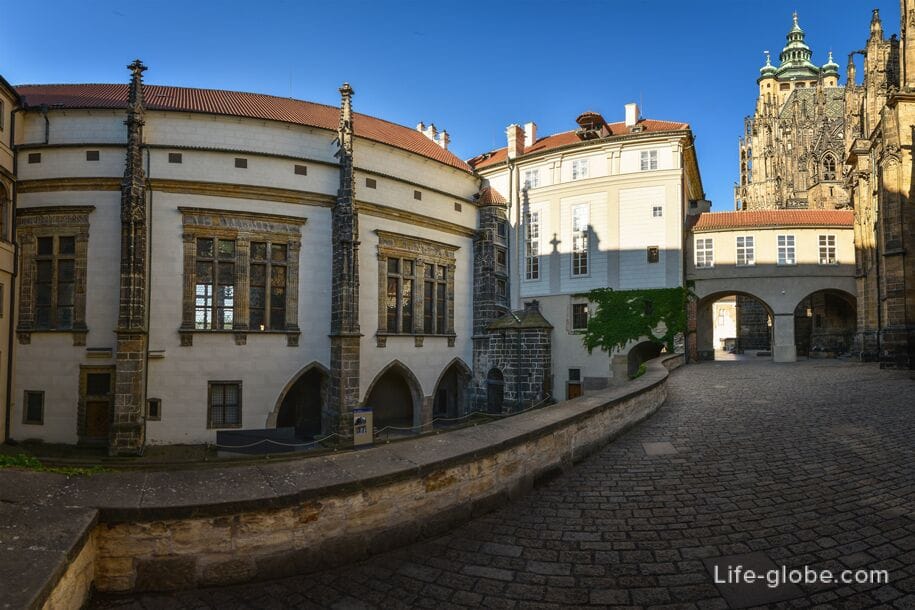
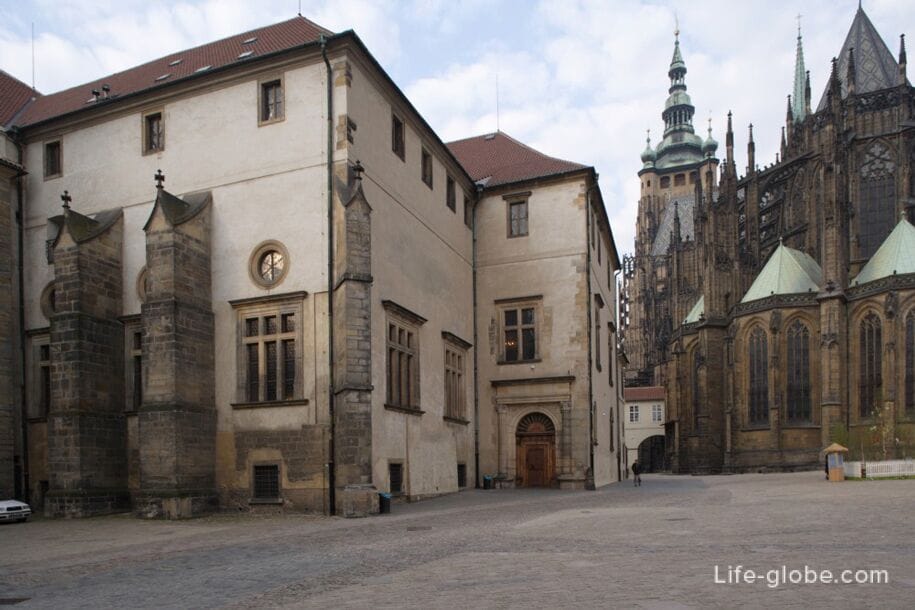
Exteriors of the Old Royal Palace of Prague
Executive Floor
The executive floor of the palace consists of:
- the foyer and the Green Room (Předsálí a Zelená světnice), in which the courts sat. The hall is decorated with the coats of arms of chamber officials of the 18th century. Fragments of terrestrial coats of arms have been preserved on the walls. A Baroque fresco stands out on the ceiling, moved here from the building of the Supreme Burgrave Chancellery in 1963;
- The Small audience Hall of Vladislav (Vladislavova malá audienční sín) until 1490, with a decorative vault in the late Gothic style and earthly coats of arms on bolts. The walls are decorated with coats of arms of the highest court masters of the kingdom of the 16th century.
The most notable of the rooms of the executive floor of the Old Royal Palace is the late GothicVladislavsky Hall (Vladislavsky sál).
This is the largest secular room in medieval Prague, created between 1490-1502 according to the plans of architect Benedict Reith, who combined the art of late Gothic with elements of the then emerging Renaissance style in the design of the hall.
Since the 16th century, Vladislav Hall has served primarily as a place of royal representation. Coronation festivities, balls, banquets, jousting tournaments, trade in works of art and luxury items took place here. Later, the elections of the President of the Czech Republic were held in Vladislav Hall, and solemn meetings related to important days of the Czech Republic are still held.
The hall has a beautiful vault, a wooden floor that probably dates back to 1791, and three original tin chandeliers dating from the 16th century.
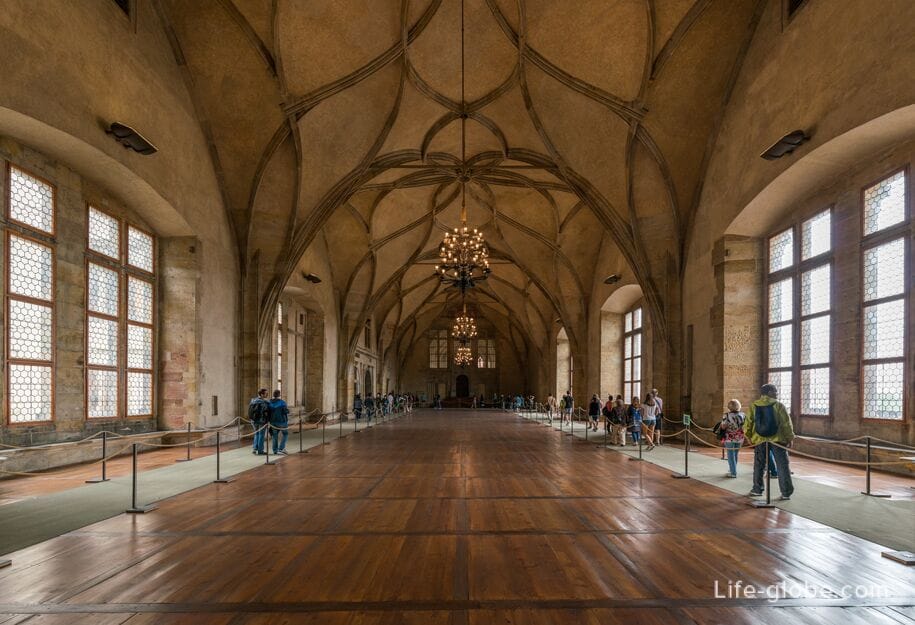
There is an exit from the Vladislavsky Hall leading to the Renaissance wing of Ludvik(Ludvíkova křídla), which was probably built according to the project of Benedict Reed in 1503-1520.
Here are:
- rooms of the Czech Chancellery (místnosti České kanceláře), which represented the King in his absence;
- the room of the Imperial Palace Council (Světnice Šíšské dvorské rady), which has a Renaissance interior and large windows. Office furniture and a tiled stove date back to the 17th century. On the walls there are portraits of Czech kings from the Habsburg dynasty;
- premises of the Slabs of Novaya Zemlya (Místnosti Nových zemských desek), where clerks in land councils have worked since the 1960s. Their portraits adorn the walls and the vaulted ceiling of the room. There are also carved cabinets from the time of Rudolf II;
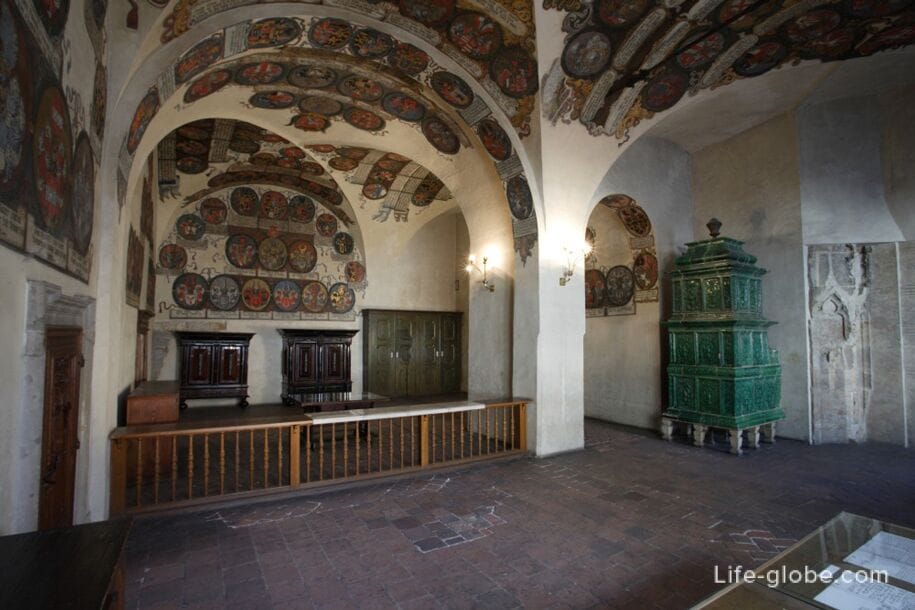
- An old house of the mid-16th century (Sněmovna), built according to the historical project of Boniface Wolmut. The hall has a decorative ribbed vault and on the elevation the grandstand of the Chief Scribe, connected to the space of the room of the New Earth Slabs. Here is furniture for the meetings of the king, the archbishop and other members of the church, representatives of lords, knights, royal cities, high provincial officials and judges. On the wall there are large portraits of Maria Theresa and her husband, Joseph II, Leopold II, and Francis II;

- The Theresia Wing (Tereziánské křídlo), which is a narrow section built by Maria Theresa in 1766-1768 as a link between the Louis Wing andInstitute of Noble Maidens (Rozhmberkov Palace).
From the observation deck (balcony) at the southern wall of Vladislav Hall, a beautiful view of the garden on the Walls (Zahrada Na valech) and part of historical Prague opens.
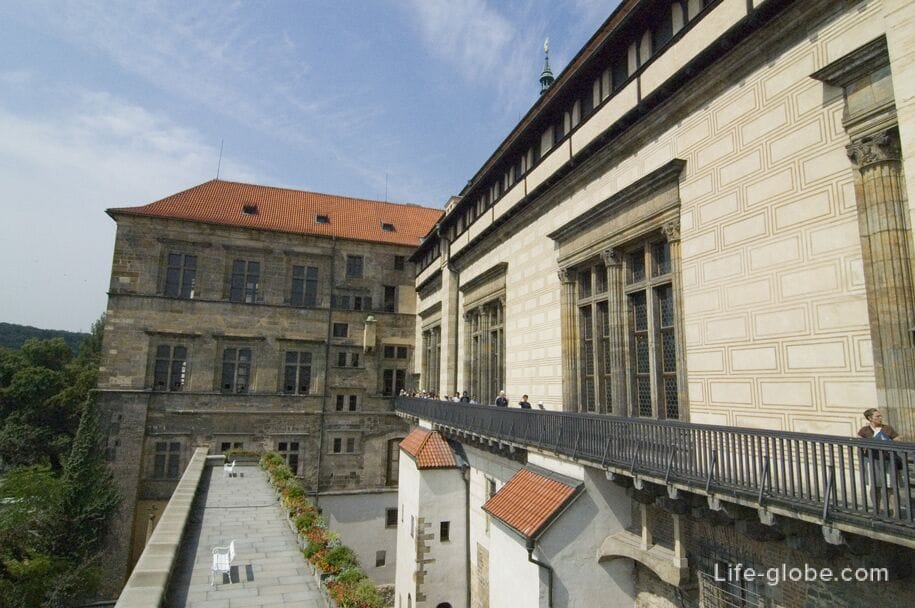
The Vladislavsky Hall rises The equestrian staircase (Jezdecké schody), which once served as the entrance of knights on horseback to tournaments in Vladislav Hall.
The staircase has 9 low steps, a width of 3.5 meters and a length of 8.35 meters. The ceiling above the stairs has a complex vault with intersecting ribs.
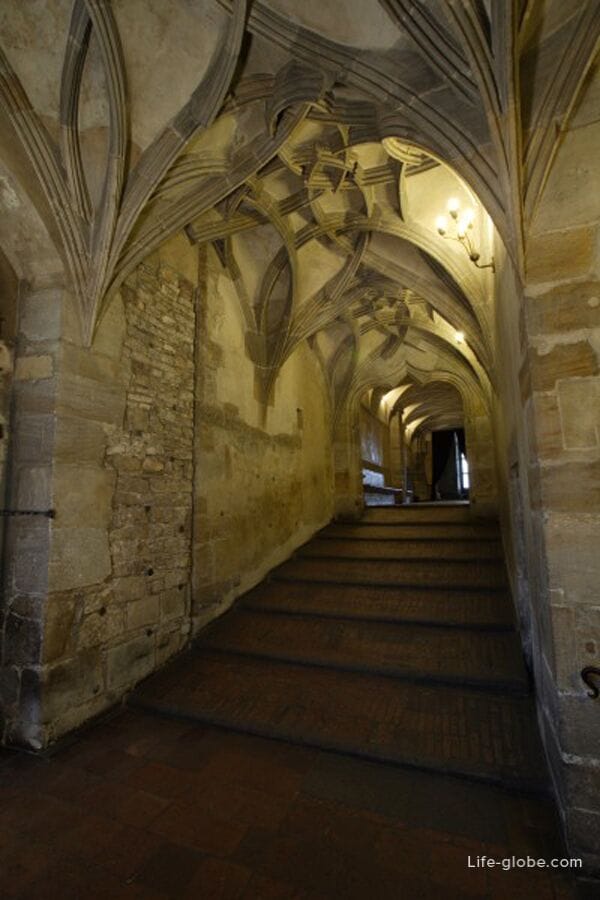
Adjacent to Vladislav Hall is another important building of the palace - the Church of All Saints (Kostel Všech svatých), built by Peter Parlerj after 1370 on the site of the Romanesque palace chapel.
The fire of 1541 almost completely destroyed the church, leaving only the perimeter walls. In 1580, the church was rebuilt in Renaissance style, and also extended to Vladislav Hall, with which the church is connected by one of the portals.
The main altar of the church is made in the Baroque style, it depicts the image of All Saints by Vaclav Wawrzynec Reiner in 1732. The shrine is decorated with paintings based on the legends of Saint Prokop by Christian Dittman from 1669. The last of the paintings shows the transfer of the remains of St. Prokop from the Sazavsky monastery to the Church of All Saints in 1588, where they were buried.

Romanesque Dungeon
The Romanesque dungeon (romanské podzemí) is the oldest part of the palace, where there are four rooms of the first Romanesque palace of Sobeslav, built in the 12th century.
From the premises: the former passage through the gates of the southern tower, which were part of the fortress fortifications; the remains of the ramparts; the former basement of the palace with a barrel-vaulted hall and small windows; the lower floor of the Romanesque chapel of All Saints.
Gothic floor
The Gothic floor (Do gotického podlaží) is located at the level of the first basement floor of the current palace and includes: the arcades of the time of Charles IV; the hall of Old Earth Slabs of the time of the Prince Otakar II; Charles Hall with an additional built-in vault; the old registry of the Accounting Chamber of the Czech Republic; The Columned Halls of Vaclav IV circa 1400 - a Gothic room that was originally used for living; the room of the depository of Judicial Colleges.
Today, the Gothic floor houses the exhibition "The History of Prague Castle", which presents exhibits that allow you to get acquainted with the more than a thousand-year history of Prague Castle.
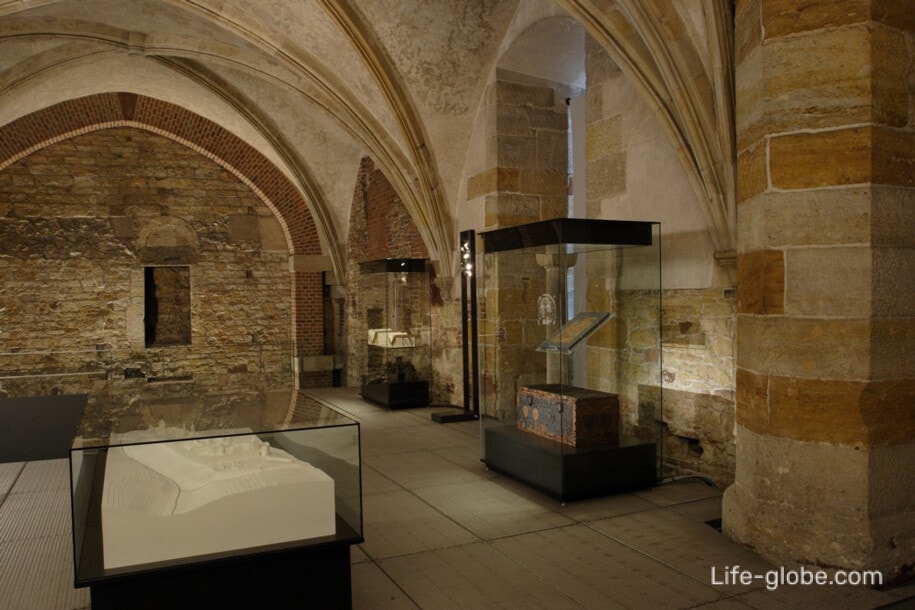

Practical information
A visit to the Old Royal Palace is paid and is included in the price of complex tickets for Prague Castle. Tickets also include: visit Golden streets with the Daliborka tower, St. George's basilica, St. Vitus Cathedral, expositions and other objects in Prague Castle. Tickets are valid for 2 days.
Admission to the exhibition "The History of Prague Castle" is paid separately.
The entrance to the territory of the Prague Castle itself is free. Learn more about Prague Castle, its objects and museums...
All the conditions for visiting the Old Royal Palace, other objects, expositions and exhibitions of Prague Castle, the place of purchase of tickets and the cost of tickets, we recommend checking on the official website of Prague Castle: prazsky-hrad-pro-navstevniky.
You can get to Prague Castle by public transport, taxi, by car or on foot from the historical center of Prague.
Address of Prague Castle: Hradčany, 119 08 Prague 1, Czech Republic.
Coordinates of Prague Castle: 50°05'26.0"N 14°23'59.0"E (50.090556, 14.399722).
All accommodation facilities in Prague (hotels, apartments, guest houses, etc.), including in the historical center of the city and more remotely from it, can be viewed and booked here




